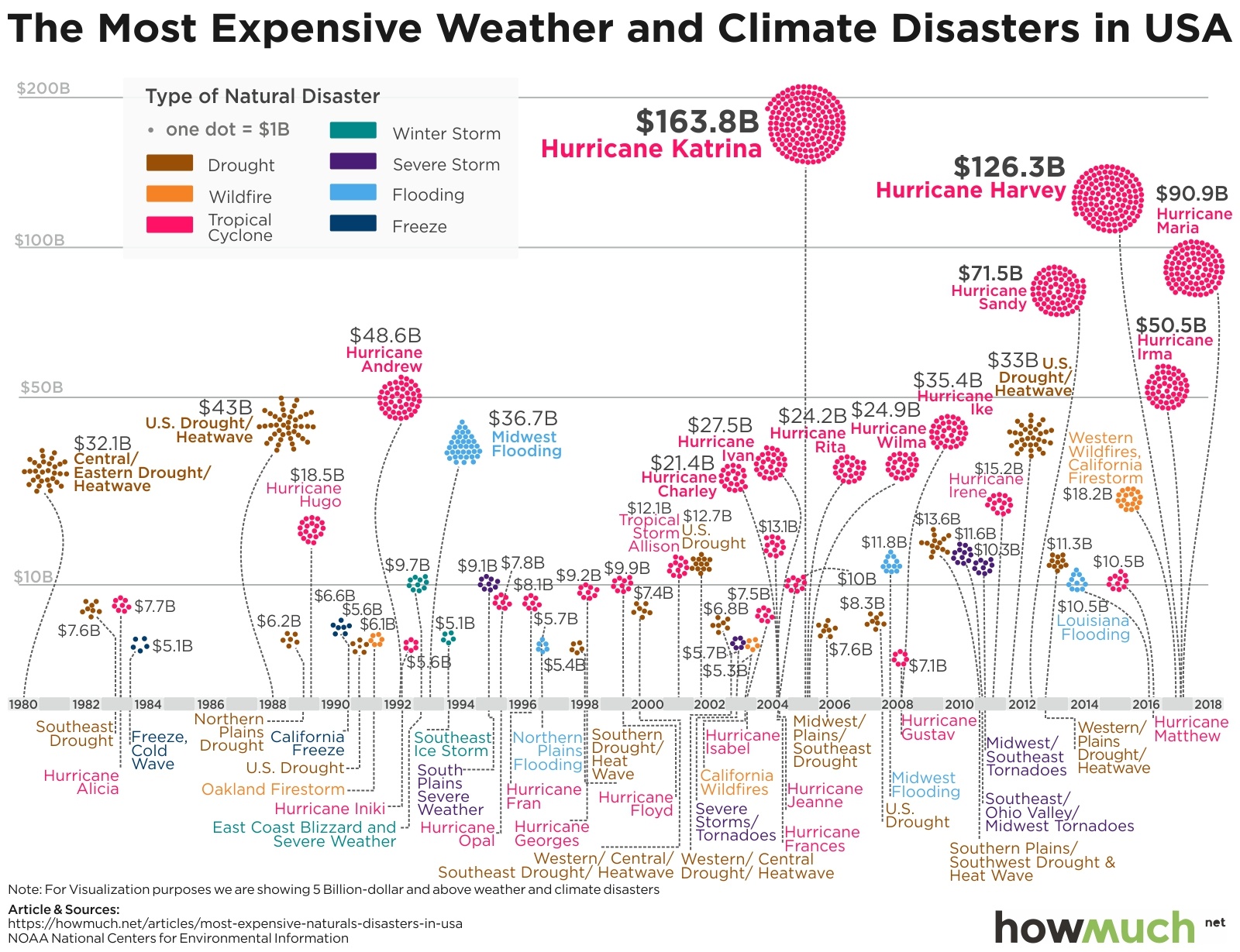Hawaii’s Kilauea volcano is now threatening to destroy more homes, forcing the authorities to order a mandatory evacuation for additional neighborhoods. There’s no telling when the volcano will finally stop, but it has already destroyed 82 structures. That means we will have to wait assess the final cost of damages, but it got us thinking about the most expensive natural disasters in American history.
Q1 hedge fund letters, conference, scoops etc, Also read Lear Capital: Financial Products You Should Avoid?
The National Centers for Environmental Information (NOAA) closely tracks severe weather events and natural disasters across the U.S. The dataset runs from 1980 to April 6, 2018, making it one of the most complete and accurate assessments of natural disasters available today. Researchers used the Consumer Price Index (CPI) to adjust the cost of damages, creating a fair apples-to-apples comparison. We illustrated each disaster on a timeline, where the size of the figure represents its total cost.
Top Ten Most Expensive Natural Disasters since 1980
- Hurricane Katrina: $163.8B in damages, ended in August 2005
- Hurricane Harvey: $126.3B in damages, ended in August 2017
- Hurricane Maria: $90.9B in damages, ended in September 2017
- Hurricane Sandy: $71.5B in damages, ended in October 2012
- Hurricane Irma: $50.5B in damages, ended in September 2017
- Andrew: $48.6B in damages, ended in August 1992
- U.S. Drought/ Heatwave: $43B in damages, ended in August 1988
- Midwest Flooding: $36.7B in damages, ended in August 1993
- Hurricane Ike: $35.4B in damages, ended in September 2008
- U.S. Drought/ Heatwave: $33B in damages, ended in December 2012
Our timeline illustrates how natural disasters have become increasingly expensive over the last 4 decades. In fact, last year they cost Americans a record $306B. Damages from individual events exceeded $10B prior to 2000, with only one event, Hurricane Andrew, coming close to topping $50B. Since the turn of the century, however, Mother Nature has extracted an increasingly higher price from Americans with Hurricane Katrina topping the list at $163.8B in 2005. But that figure isn’t such an extreme outlier any longer as storms have become increasingly costly.
The upward trend in damage is due entirely to hurricanes, but there’s a deeper story going on. Hurricanes have been hitting the Gulf Coast and Eastern Seaboard of North America for centuries, and yes, you can make an argument that recent storms have been more powerful than normal. But the real problem is that Americans have built so many large cities so close to the water without investing in the necessary infrastructure to protect people from disasters. The South is home to a disproportionate share of the country’s fastest growing cities, and we know natural disasters tend to strike the same place time after time. That’s a recipe for very expensive damages.
You can draw a couple more insights from our visualization too. First off, tornadoes are certainly scary events, but they just don’t cause anywhere near as much destruction and property damage as hurricanes. Second, and perhaps more surprising, droughts/heatwaves make it into the top ten most destructive natural disasters. This is no doubt connected to losses suffered on farms in crops and livestock.
The big takeaway here is that if past is prologue, expect there to be several more $50B+ hurricanes in the years ahead. And will we have to add a figure for volcanoes to our timeline if the situation in Hawaii continues to get worse? The Kilauea volcano still has a long way to go, but the costs are already piling up.
If there are other natural disasters missing, let us know at press@howmuch.net so we can update our article.
Data: Table 1.1
Article by HowMuch


